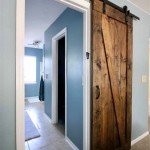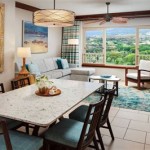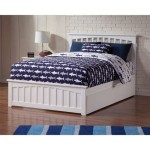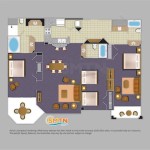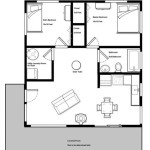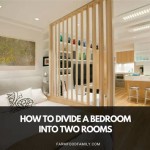Illuminating Your Sanctuary: Bedroom Lighting Solutions Without Ceiling Fixtures
The absence of a ceiling light fixture in a bedroom presents a unique opportunity to design a personalized and effective lighting scheme. While overhead lighting is often considered a standard feature, alternative lighting solutions can create a more intimate and adaptable ambiance. This article explores various strategies for illuminating a bedroom without relying on a traditional ceiling light, emphasizing functionality, aesthetics, and energy efficiency.
Maximizing Natural Light
Before considering artificial lighting options, it is crucial to optimize the use of natural light. Natural light not only brightens the room but also has numerous health benefits, including improved mood and sleep patterns. Strategies for maximizing natural light include:
Window Treatments: Opting for light-filtering curtains or blinds allows ample natural light to enter while maintaining privacy. Sheer curtains are an excellent choice for diffusing light, creating a soft and inviting atmosphere. Avoid heavy, dark curtains that block out sunlight, especially during daytime hours.
Mirror Placement: Strategically placing mirrors can reflect and amplify natural light, making the room appear brighter and more spacious. Consider placing a large mirror opposite a window to maximize light reflection. Smaller mirrors can also be used to bounce light into darker corners of the room.
Light-Colored Walls: Light-colored walls reflect more light than dark-colored walls, contributing to a brighter and more airy feel. Consider painting the walls in shades of white, cream, or pale pastel colors to maximize natural light reflection. Lighter colors enhance the room's overall illumination and create a more welcoming environment.
Clean Windows: Regularly clean windows to remove dirt and grime that can obstruct natural light. Clean windows allow more sunlight to enter the room, significantly improving its brightness and ambiance. Cleaning windows is a simple yet effective way to enhance natural light penetration.
Embracing Floor Lamps
Floor lamps are versatile and practical lighting solutions for bedrooms without ceiling fixtures. They provide ambient, task, and accent lighting, catering to various needs and preferences. Floor lamps come in different styles, sizes, and designs, allowing for seamless integration with the room's décor.
Placement Strategy: Strategic placement of floor lamps is essential for optimal illumination. Position a floor lamp near a reading chair to provide task lighting. Place floor lamps in corners to brighten up dark spaces and add depth to the room. Consider using multiple floor lamps to create a balanced and layered lighting scheme.
Types of Floor Lamps: Different types of floor lamps offer distinct lighting effects. Torchiere floor lamps direct light upwards, creating a soft, ambient glow. Arc floor lamps extend over a seating area, providing focused task lighting. Adjustable floor lamps allow for flexible positioning of the light source. Tripod floor lamps add a stylish and contemporary touch to the room.
Bulb Selection: Choosing the right light bulb is crucial for achieving the desired lighting effect. LED bulbs are energy-efficient and long-lasting, making them a sustainable choice. Warm white bulbs create a cozy and inviting atmosphere, while cool white bulbs provide brighter and more focused illumination. Consider using dimmable bulbs to adjust the brightness according to the mood and activity.
Style and Design: Floor lamps are available in a wide range of styles and designs, from minimalist and modern to traditional and ornate. Select floor lamps that complement the room's décor and personal style. Consider the lamp's material, finish, and overall aesthetic to ensure it blends seamlessly with the existing furniture and accessories.
Utilizing Table Lamps and Bedside Lamps
Table lamps and bedside lamps are indispensable for creating a comfortable and functional bedroom environment. They provide localized lighting for reading, writing, and other activities, while also adding decorative flair to the room. These lamps are typically placed on bedside tables, dressers, or desks, offering convenient and accessible lighting.
Bedside Lamps: Bedside lamps are essential for reading in bed and providing soft, ambient light for relaxation. Choose lamps with adjustable arms or shades to direct the light where it is needed. Consider using lamps with dimmer switches to adjust the brightness and create a relaxing atmosphere before sleep. Matching bedside lamps can create a symmetrical and balanced look.
Table Lamps: Table lamps can be placed on dressers, desks, or side tables to provide additional lighting and enhance the room's décor. Select lamps that complement the room's style and color scheme. Consider using lamps with decorative shades to add a touch of personality and visual interest. Table lamps can also be used to highlight artwork or decorative objects.
Lamp Shade Selection: The lamp shade plays a crucial role in shaping the light and enhancing the lamp's aesthetic appeal. Light-colored shades diffuse the light more evenly, creating a soft and ambient glow. Dark-colored shades focus the light downwards, providing more direct task lighting. Consider the shade's shape, size, and material to achieve the desired lighting effect and overall look.
Bulb Choice for Bedside Reading: For bedside reading, use bulbs that provide ample light without being too harsh or glaring. LED bulbs with a warm white color temperature are a good choice, as they provide sufficient illumination while creating a relaxing atmosphere. Avoid using bulbs that are too bright or emit a harsh blue light, as these can disrupt sleep patterns.
Incorporating Wall Sconces
Wall sconces are stylish and space-saving lighting solutions that can add a touch of elegance and sophistication to the bedroom. They provide ambient or task lighting without taking up floor or table space. Wall sconces can be hardwired or plug-in, offering flexibility in installation and placement.
Placement Above Bedside Tables: Mounting wall sconces above bedside tables is a practical and aesthetically pleasing way to provide reading light. This placement eliminates the need for table lamps, freeing up space on the bedside table. Adjustable wall sconces are particularly useful for directing the light where it is needed.
Sconces as Accent Lighting: Wall sconces can also be used as accent lighting to highlight architectural features or artwork. Place sconces on either side of a mirror or painting to create a focal point. Consider using sconces with decorative shades to add a touch of personality and visual interest.
Types of Wall Sconces: There are different types of wall sconces to choose from, including up-lighting sconces, down-lighting sconces, and sconces that provide both up and down lighting. Up-lighting sconces create a soft, ambient glow, while down-lighting sconces provide more focused task lighting. Choose the type of sconce that best suits the room's needs and aesthetic.
Hardwired vs. Plug-In Sconces: Hardwired sconces require professional installation but offer a clean, seamless look. Plug-in sconces are easier to install and can be moved around as needed. Consider the room's electrical configuration and personal preferences when choosing between hardwired and plug-in sconces.
Utilizing String Lights and Fairy Lights
String lights and fairy lights can create a whimsical and enchanting atmosphere in the bedroom. They provide soft, ambient lighting and add a touch of magic to the space. String lights and fairy lights are versatile and can be used in a variety of ways to enhance the room's décor.
Draping Around the Bed Frame: Draping string lights or fairy lights around the bed frame is a popular way to create a cozy and inviting atmosphere. This placement provides soft, ambient lighting and adds a touch of romance to the room. Consider using lights with warm white bulbs to create a relaxing and serene environment.
Hanging on Walls or Curtains: String lights can also be hung on walls or curtains to create a decorative effect. This placement adds a touch of sparkle and visual interest to the room. Consider using lights with different colors or patterns to create a unique and personalized look.
Incorporating into Decorative Objects: String lights can be incorporated into decorative objects, such as glass jars or lanterns, to create unique and eye-catching displays. This approach adds a touch of whimsy and creativity to the room. Consider using battery-operated lights for added convenience and portability.
Safety Considerations: When using string lights and fairy lights, it is important to consider safety. Make sure the lights are UL-listed or ETL-listed, indicating that they have been tested for safety. Avoid overloading electrical outlets and keep lights away from flammable materials. Inspect the lights regularly for any damage or wear.
Implementing Smart Lighting Solutions
Smart lighting solutions offer enhanced control and convenience, allowing for personalized lighting schemes tailored to individual preferences. Smart bulbs, smart switches, and smart dimmers can be controlled remotely via smartphones or voice assistants, providing unparalleled flexibility and energy savings.
Smart Bulbs: Smart bulbs can be controlled remotely to adjust brightness, color temperature, and even color. This allows for creating different lighting scenes for various activities, such as reading, relaxing, or entertaining. Smart bulbs can also be programmed to turn on and off at specific times, providing added security and energy savings.
Smart Switches and Dimmers: Smart switches and dimmers can be used to control existing lighting fixtures, even those without smart bulbs. These devices allow for adjusting the brightness of the lights and creating customized lighting scenes. Smart switches and dimmers can also be controlled remotely via smartphones or voice assistants.
Voice Control Integration: Integrating smart lighting solutions with voice assistants like Amazon Alexa or Google Assistant allows for hands-free control of the lights. Simply use voice commands to turn the lights on or off, adjust the brightness, or change the color. This feature is particularly useful for setting the mood before bed or when your hands are full.
Energy Savings: Smart lighting solutions can help reduce energy consumption by allowing for precise control over lighting usage. Smart bulbs are typically more energy-efficient than traditional incandescent bulbs, and the ability to dim the lights can further reduce energy consumption. Scheduling the lights to turn off automatically when not in use can also contribute to significant energy savings.

Awesome Lighting Ideas For Rooms Without Ceiling Lights Doğtaş

Awesome Lighting Ideas For Rooms Without Ceiling Lights Doğtaş

Creative Ideas For Lighting Rooms Without Ceiling Lights Lightlady Studio

Awesome Lighting Ideas For Rooms Without Ceiling Lights Doğtaş

Lighting Ideas For Rooms Without Ceiling Lights

Creative Ideas For Lighting Rooms Without Ceiling Lights Lightlady Studio

15 Awesome Lighting Ideas For Rooms Without Ceiling Lights

15 Awesome Lighting Ideas For Rooms Without Ceiling Lights

Creative Ideas For Lighting Rooms Without Ceiling Lights Lightlady Studio

9 Lighting Ideas For Rooms Without Ceiling Lights Blisslights

